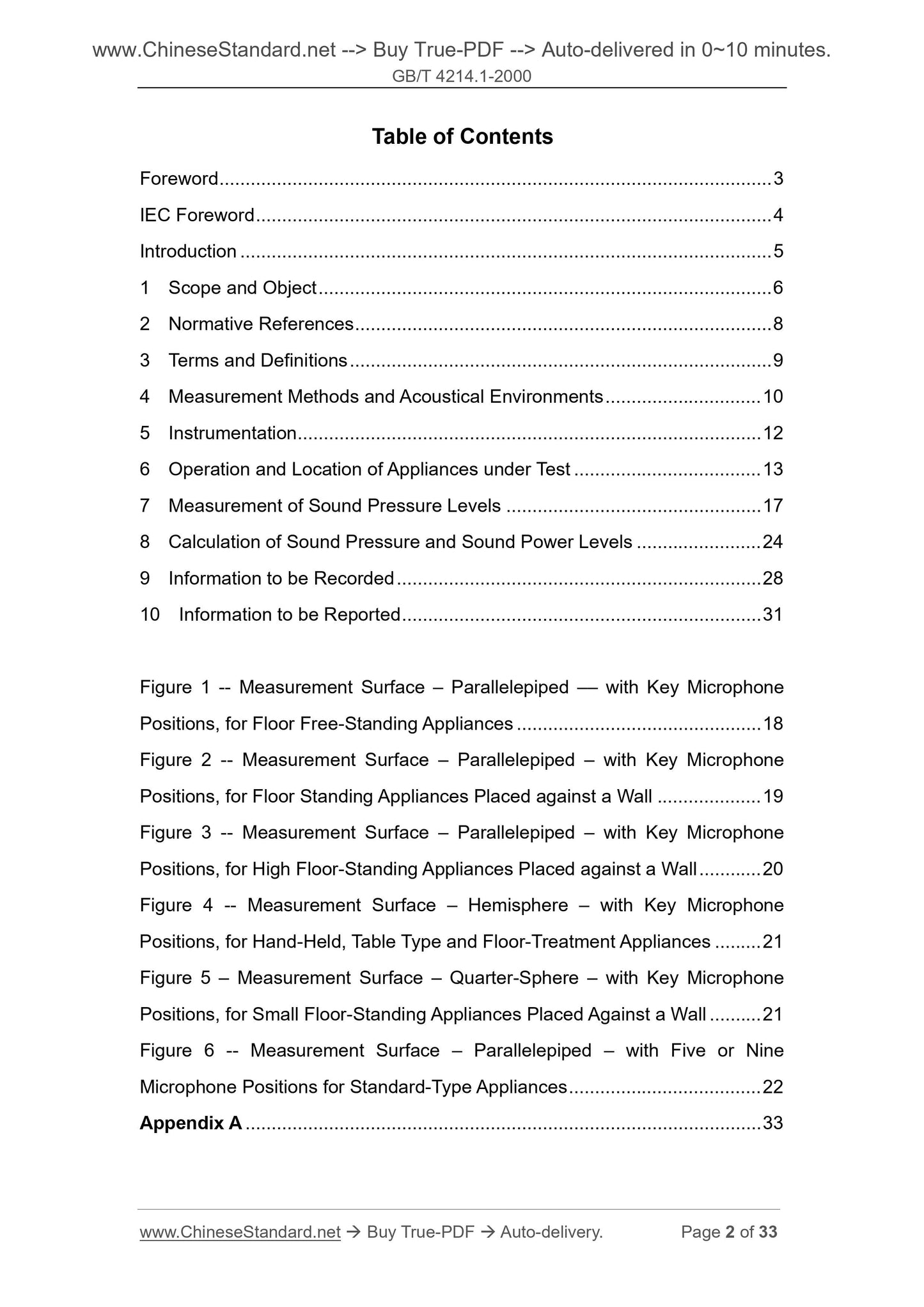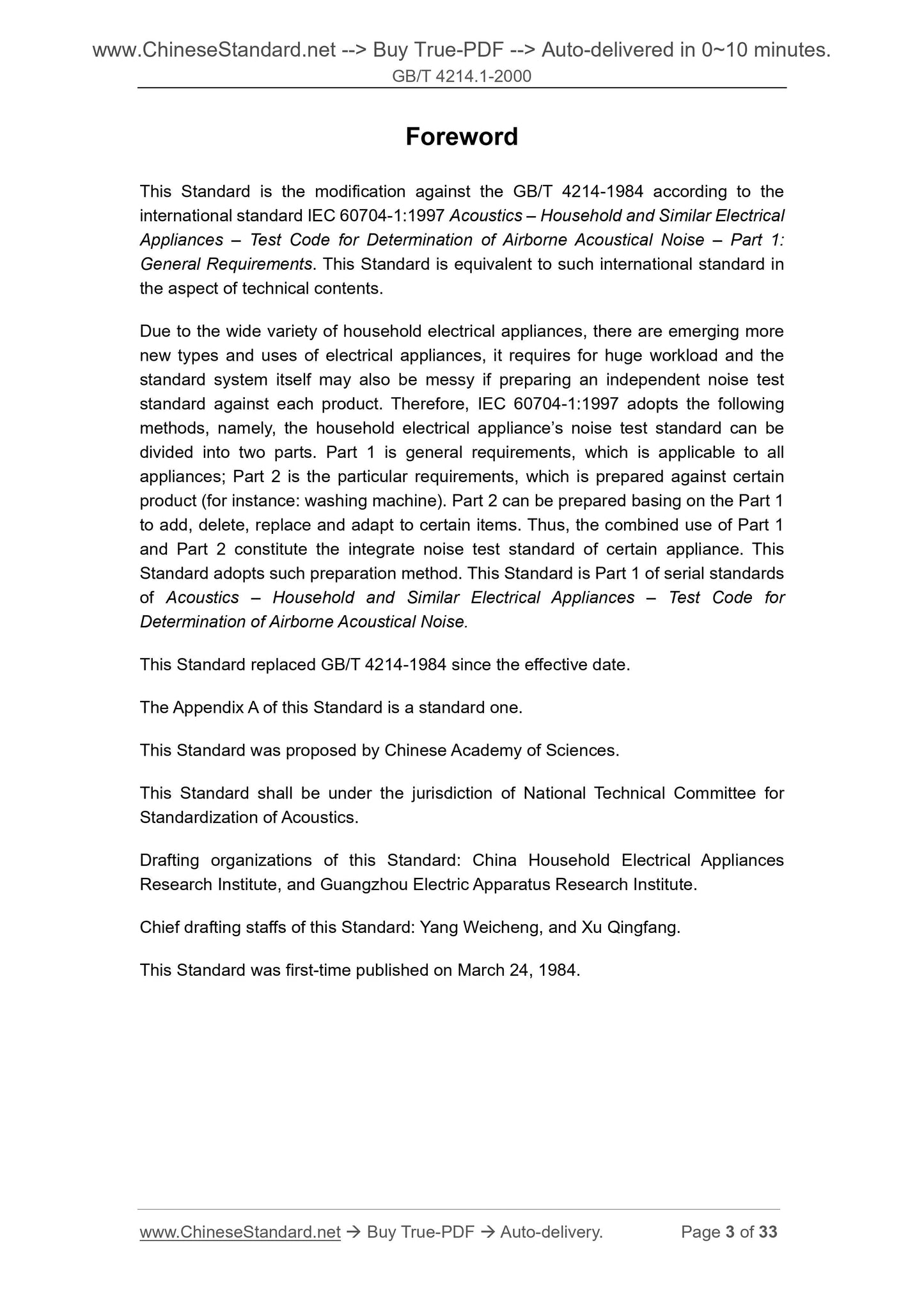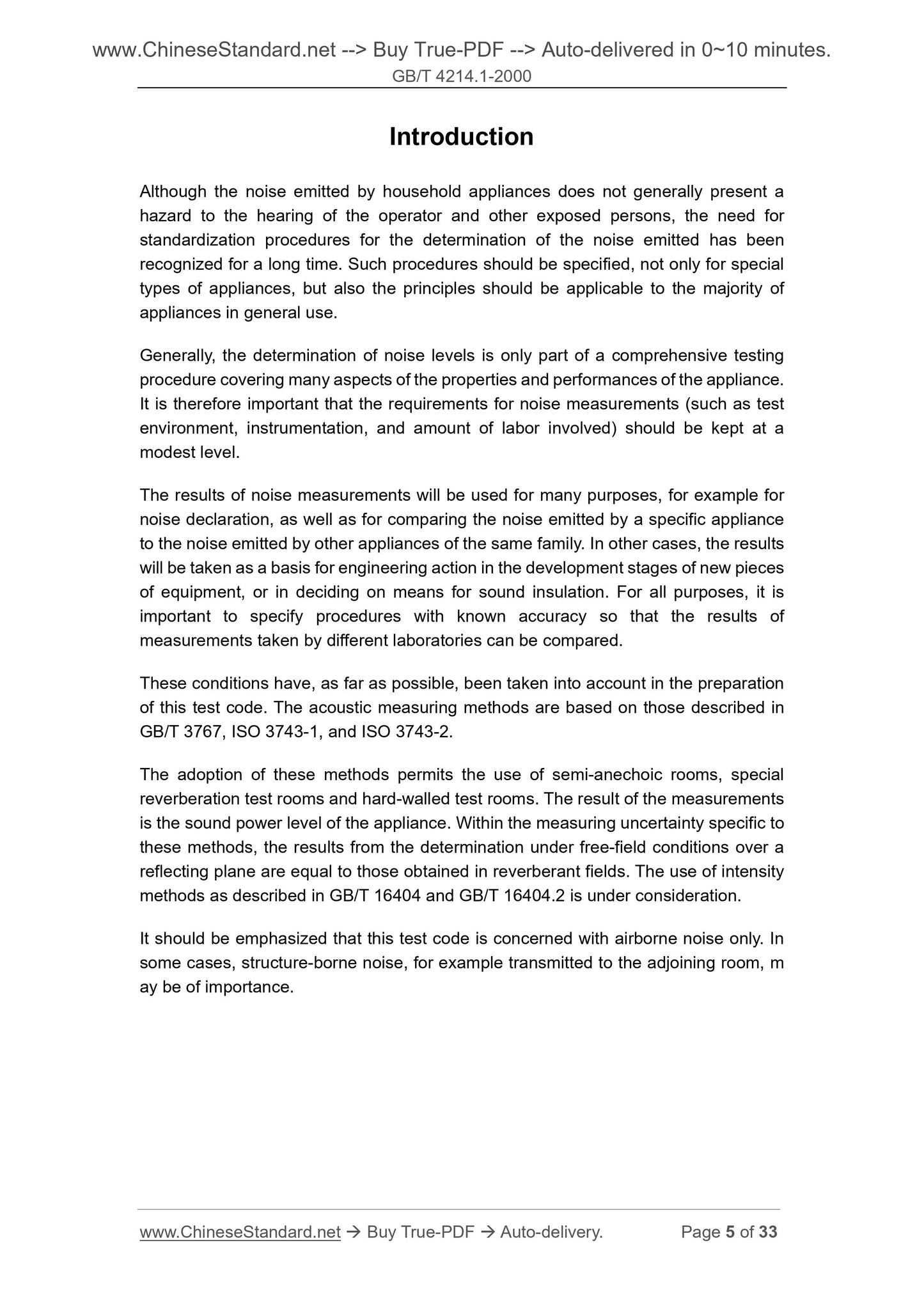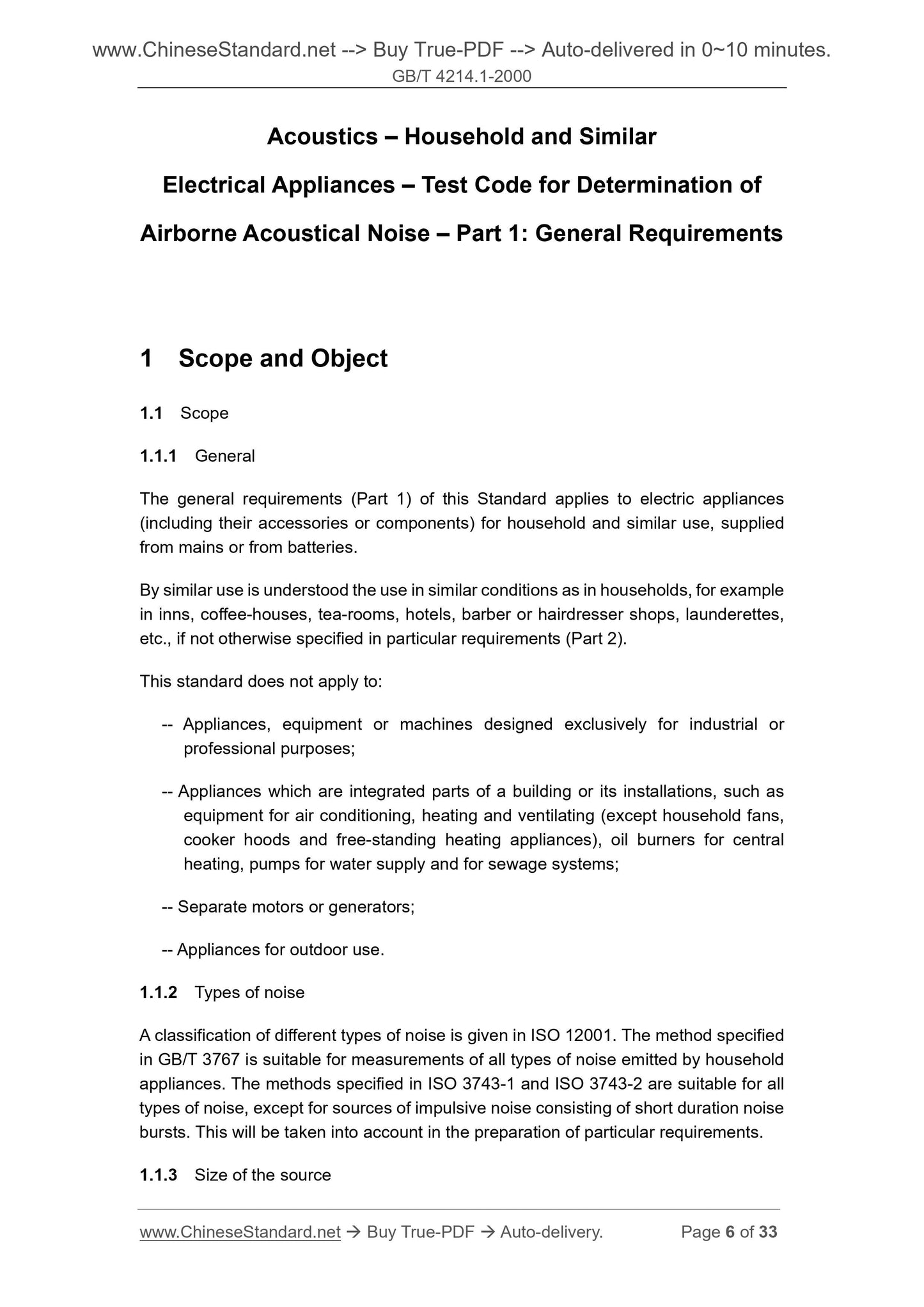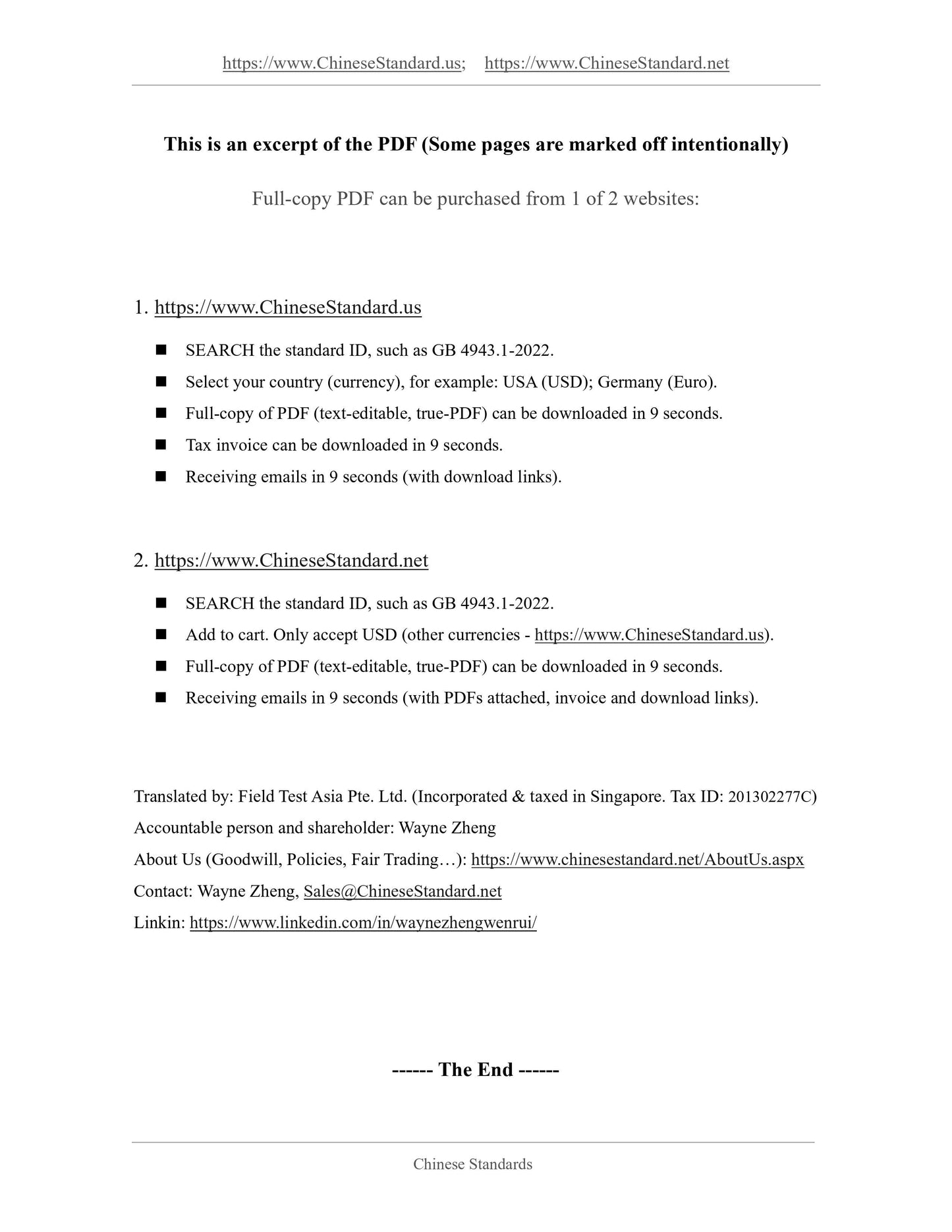1
/
of
6
PayPal, credit cards. Download editable-PDF and invoice in 1 second!
GB/T 4214.1-2000 English PDF (GB/T4214.1-2000)
GB/T 4214.1-2000 English PDF (GB/T4214.1-2000)
Regular price
$295.00
Regular price
Sale price
$295.00
Unit price
/
per
Shipping calculated at checkout.
Couldn't load pickup availability
GB/T 4214.1-2000: Acoustics. Household and similar electrical appliances. Test code for determination of airborne acoustical noise. Part 1: general requirements
Delivery: 9 seconds. Download (and Email) true-PDF + Invoice.Get Quotation: Click GB/T 4214.1-2000 (Self-service in 1-minute)
Newer / historical versions: GB/T 4214.1-2000
Preview True-PDF
Scope
1.1 Scope1.1.1 General
The general requirements (Part 1) of this Standard applies to electric appliances
(including their accessories or components) for household and similar use, supplied
from mains or from batteries.
By similar use is understood the use in similar conditions as in households, for example
in inns, coffee-houses, tea-rooms, hotels, barber or hairdresser shops, launderettes,
etc., if not otherwise specified in particular requirements (Part 2).
This standard does not apply to.
-- Appliances, equipment or machines designed exclusively for industrial or
professional purposes;
-- Appliances which are integrated parts of a building or its installations, such as
equipment for air conditioning, heating and ventilating (except household fans,
cooker hoods and free-standing heating appliances), oil burners for central
heating, pumps for water supply and for sewage systems;
-- Separate motors or generators;
-- Appliances for outdoor use.
1.1.2 Types of noise
A classification of different types of noise is given in ISO 12001. The method specified
in GB/T 3767 is suitable for measurements of all types of noise emitted by household
appliances. The methods specified in ISO 3743-1 and ISO 3743-2 are suitable for all
types of noise, except for sources of impulsive noise consisting of short duration noise
bursts. This will be taken into account in the preparation of particular requirements.
1.1.3 Size of the source
Basic Data
| Standard ID | GB/T 4214.1-2000 (GB/T4214.1-2000) |
| Description (Translated English) | Acoustics. Household and similar electrical appliances. Test code for determination of airborne acoustical noise. Part 1: general requirements |
| Sector / Industry | National Standard (Recommended) |
| Classification of Chinese Standard | Z32 |
| Classification of International Standard | 17.140.20 |
| Word Count Estimation | 19,178 |
| Date of Issue | 2000-03-16 |
| Date of Implementation | 2000-12-01 |
| Older Standard (superseded by this standard) | GB/T 4214-1984 |
| Quoted Standard | GB/T 3241-1998; GB/T 3767-1996; GB/T 3785-1983; GB/T 4129-1995; GB/T 6881-1986; GB/T 6882-1986; GB/T 17181-1997; ISO 3743-1-1994; ISO 3743-2-1994; ISO 12001-1996; IEC 704-3-1992 |
| Adopted Standard | IEC 60704-1-1997, MOD |
| Issuing agency(ies) | State Quality and Technical Supervision |
| Summary | This standard applies to the mains supply or battery -powered household and similar electrical appliances, including their accessories and parts. If the special request section (Part 2) is not specified, understood as similar purposes and family environment similar conditions. Such as in hotels, cafes, tearooms, barber shops, beauty shops or laundries and so on. |
Share

